
Astrology: Stalking and the Pluto Effect – Part 2
 The reality of stalking by former partners is as distressing as it is complex, like peering into the dark abyss of human desperation. This pattern, with its unpredictable timeline, exposes a desperate clinging, a refusal to let go, often entangled with notions of possession and control. It’s as if the person who stalks is suspended in an emotional purgatory, where time is not a healer but a magnifying glass that intensifies their unresolved feelings and the illusions they carry. The variation in the timing of violent incidents after a relationship has ended—sometimes immediate, sometimes lurking like a slow-burning fuse—reflects that their obsessive anguish isn’t just reactionary, but a state that can fester. After all, when you see someone who can’t let go, you’re seeing someone whose sense of self-worth, maybe their very identity, is shackled to the memory of that relationship. And that bond, even if broken, remains alive for them, like a ghost that haunts the living.
The reality of stalking by former partners is as distressing as it is complex, like peering into the dark abyss of human desperation. This pattern, with its unpredictable timeline, exposes a desperate clinging, a refusal to let go, often entangled with notions of possession and control. It’s as if the person who stalks is suspended in an emotional purgatory, where time is not a healer but a magnifying glass that intensifies their unresolved feelings and the illusions they carry. The variation in the timing of violent incidents after a relationship has ended—sometimes immediate, sometimes lurking like a slow-burning fuse—reflects that their obsessive anguish isn’t just reactionary, but a state that can fester. After all, when you see someone who can’t let go, you’re seeing someone whose sense of self-worth, maybe their very identity, is shackled to the memory of that relationship. And that bond, even if broken, remains alive for them, like a ghost that haunts the living.
In the immediacy of post-breakup rage, the danger is raw, unfiltered—an anger that lashes out because it can’t handle the rejection. But the long-drawn-out cases, where months or even a year elapses before violence surfaces, are even more chilling. It’s as if these stalkers are simmering, concocting a brew of bitterness and entitlement, imagining a world where the separation was an affront to some imagined order. Time, instead of diluting their obsession, becomes a cocoon in which their sense of grievance grows ever more twisted.
And this is not just about personal wounds; it’s about the illusion of control—something that partners-turned-stalkers often can’t bear to lose. They are trying to rewrite the story, but in a way that centers their pain, their need, their narrative of being wronged. It speaks to a desperate refusal to face the unsettling truth that someone has chosen a life apart from them. These timelines reveal that when it comes to stalking, the heartache doesn’t just fade into the background. It’s like a wound that festers under a bandage of time, hidden until, suddenly, it bursts into violence. The span between breakup and outburst is like a roulette wheel—dreadfully unpredictable and full of dangerous potential. And in those uncertain spaces, where the stalker’s thoughts grow darker, there is a sobering reminder of the fragility of safety for those on the receiving end.
This complexity means that for those seeking to prevent such tragedies, there is no easy blueprint—no one-size-fits-all way to predict when the obsession might turn to violence. What’s clear, though, is that it’s driven by emotions that have nowhere to go except inward, twisting and warping until they spill outwards in ways that are all too destructive. It’s a heartbreaking, terrifying reality, but understanding it is the first step toward getting the kind of support, safety, and intervention that could save lives.
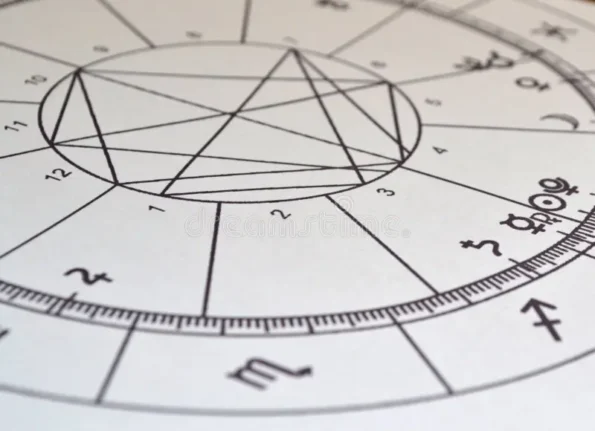 In the realms of astrology and the deep corridors of the human psyche, it’s an intriguing crossroads. When we dive into the tumultuous waters of the stalker’s mind, we see that unyielding grip on emotion—a grasp so tight, it’s as if they’re holding onto a lifeline, or maybe a chain, unable to let it slip away. They remain trapped in a time-loop of their own making, forever orbiting the memory of a relationship that has already disintegrated, like a ghostly echo of something that’s no longer there. It’s not just about love gone awry; it’s about power, control, and a fierce inability to accept that their sense of importance, once tied to another, now exists untethered.
In the realms of astrology and the deep corridors of the human psyche, it’s an intriguing crossroads. When we dive into the tumultuous waters of the stalker’s mind, we see that unyielding grip on emotion—a grasp so tight, it’s as if they’re holding onto a lifeline, or maybe a chain, unable to let it slip away. They remain trapped in a time-loop of their own making, forever orbiting the memory of a relationship that has already disintegrated, like a ghostly echo of something that’s no longer there. It’s not just about love gone awry; it’s about power, control, and a fierce inability to accept that their sense of importance, once tied to another, now exists untethered.
The separation, rather than freeing them, becomes a wound that refuses to close. It festers, and they cling to it as proof of a deep injury, one that seems to justify their obsessive behavior. The world shrinks for them, and in that narrowing of focus, the object of their fixation—often the former partner—becomes the source of all their suffering and the imagined key to their redemption. That’s why the danger they pose extends so far beyond the end of the relationship. It’s like a black hole, pulling everything around it into a dark, twisted gravity well, where no light of reason can escape.
Now, the astrological insights here offer a fascinating perspective on this psychological turmoil. Transiting Pluto—the great force of transformation and deep, dark reckonings—often forms a potent aspect to the natal Sun in stalking victims. This is where the symbolism gets particularly haunting. Pluto represents the shadow, the underworld, a ruthless force that strips away the superficial to reveal the raw core beneath. When it touches the Sun, which symbolizes identity, vitality, and sometimes the archetypal masculine energy in our lives, it suggests a time when power struggles, control issues, and the need for deep transformation come to the fore.
This aspect can be a time of personal upheaval, a confrontation with one’s darkest fears and desires, the kind of time when deep-seated obsessions can become all-consuming. The synchronicity between this astrological pattern and where women have faced violence or worse at the hands of such obsessively wounded former partners—is chilling. It’s as if the heavens themselves are holding up a mirror to the turmoil below, hinting at the hidden currents that drive human behavior.
The transit of Pluto forming a significant aspect to the natal Sun seems to carry the weight of an archetypal drama—a time when crises can erupt from the underbelly of the soul. Pluto, with all its themes of death, rebirth, and intense transformation, casts a long shadow over the light of the Sun, which represents the essence of identity and vitality. Pluto’s influence is about going beyond what’s visible, peeling back layers to reveal what lies beneath. This can manifest in a healthy drive for self-discovery and transformation, but in a more shadowy form, it can also lead to an intense focus on something—or someone—that borders on fixation. Pluto’s energy, with its ties to control and power dynamics, can create a tendency to hold onto things or people with a tight grip.
Pluto governs all things hidden, mysterious, and intense, and it’s no stranger to themes of obsession, control, and compulsion. when Pluto’s energy gets a little out of hand, it might lead to those behaviors we’d associate with “stalking” in a psychological sense: monitoring, obsessing, or trying to exert control through knowledge. It’s that dark side of intimacy where the lines between curiosity, control, and fixation get blurred.
For those whose emotional state is already fragile, Pluto’s arrival is like a reckoning, stirring up the waters of the unconscious and making them dangerously turbulent. It’s a moment of crisis, where deep-seated grievances and unresolved attachments claw their way to the surface, refusing to be ignored. And when this turmoil coincides with the reality of a failed relationship, it can ignite a perfect storm.
For the stalker, rejection can feel like a personal apocalypse—a confrontation with their deepest sense of powerlessness. But instead of transforming this energy inwardly, instead of letting the old self die and making way for change, they might seek to regain control in the most destructive ways possible. They externalize their chaos, using it as a weapon against the very person who symbolizes their perceived loss of power.
The correlation between these events and real-life tragedies underscores the brutal truth about the psychological state of stalkers—their inability to accept the finality of separation, the wounded pride that mutates into obsession. It’s as if their deepest fears of insignificance pushes them towards a desperate need to reclaim a sense of dominance. The timing of this planetary aspect seems to peel back the layers of human vulnerability and instability, revealing just how thin the veneer of control can be for those driven by an all-consuming emotional wound. Pluto, after all, is the ruler of the underworld—a force that deals in secrets, shadows, and the stuff we hide even from ourselves.
Its touch on the Sun speaks to an eruption of those hidden things, a struggle to bring them to light, or else be consumed by them. The stalker’s inability to release their grip on the past becomes a danger that doesn’t just linger but lurches unpredictably from the shadows, reminding us of the potent mix of psychological fragility and cosmic timing that can shape such tragic outcomes. It’s a story where love curdles into obsession, where attachment becomes a dark tether, and where the stars, perhaps, offer a warning—if we know how to read them.
When Pluto transits the fifth house, enters the sign Leo, or aspects the Sun, you could have an obsessive love affair that controls your life. There could be radical changes with children, particularly the first born child, or your life could be dramatically transformed because of the birth of a child. There could be an obsession with creative projects, such as a book or artistic conception. Your self-image and self-perception will undergo a change. You may be drawn into power struggles or have control issues with a man. After the transit, a new and better sense of your personal power will have been defined as well as a new, more confident sense of identity. By Carol Rushman –Predictive Astrology
Victims of Stalking
 Rachel Miller’s natal chart contains symbols that, when interpreted, hint at the complex and often painful layers of her life. Starting with the Sun-Neptune opposition, we see a signature of someone whose sense of self (Sun) is in constant negotiation with the elusive, dreamlike, and sometimes deceptive energies of Neptune. This aspect suggests a life where the boundaries of reality can feel blurred, where the lines between hope and illusion fade into one another. It can manifest as a deep sensitivity, a tendency to see the best in others, even to the point of self-sacrifice—a trait that, in the wrong circumstances, makes one more vulnerable to being deceived or manipulated. For Rachel, this might have meant a tendency to overlook red flags, to see her partner through a lens of hope rather than the harsher realities. Then, there’s the Mars square Uranus/Pluto aspect, a fiery and unpredictable configuration. Mars, the planet of action and aggression, colliding with Uranus’s rebellious, electric energy, and Pluto’s deep, transformative power creates a cocktail of intensity. This aspect can drive an individual to sudden and explosive actions, but it can also attract equally volatile energies from others. It’s like walking a tightrope with a storm raging around you—one misstep and everything can spiral out of control. For Rachel, this aspect might have contributed to her drawing in partners whose unpredictability matched the turbulence reflected in her chart, creating a pattern of chaotic and potentially dangerous relationships.
Rachel Miller’s natal chart contains symbols that, when interpreted, hint at the complex and often painful layers of her life. Starting with the Sun-Neptune opposition, we see a signature of someone whose sense of self (Sun) is in constant negotiation with the elusive, dreamlike, and sometimes deceptive energies of Neptune. This aspect suggests a life where the boundaries of reality can feel blurred, where the lines between hope and illusion fade into one another. It can manifest as a deep sensitivity, a tendency to see the best in others, even to the point of self-sacrifice—a trait that, in the wrong circumstances, makes one more vulnerable to being deceived or manipulated. For Rachel, this might have meant a tendency to overlook red flags, to see her partner through a lens of hope rather than the harsher realities. Then, there’s the Mars square Uranus/Pluto aspect, a fiery and unpredictable configuration. Mars, the planet of action and aggression, colliding with Uranus’s rebellious, electric energy, and Pluto’s deep, transformative power creates a cocktail of intensity. This aspect can drive an individual to sudden and explosive actions, but it can also attract equally volatile energies from others. It’s like walking a tightrope with a storm raging around you—one misstep and everything can spiral out of control. For Rachel, this aspect might have contributed to her drawing in partners whose unpredictability matched the turbulence reflected in her chart, creating a pattern of chaotic and potentially dangerous relationships.
Now, when we turn to the transits at the time of her murder, the picture becomes even more chilling. The opposition of transiting Pluto to her natal Sun reads like the climax of a drama—Pluto, the harbinger of deep, often painful transformation, facing off against the Sun, the very core of Rachel’s identity. Oppositions are challenging—they pull in two directions, creating a tension that demands resolution. Pluto, with its themes of power struggles, death, and rebirth, might have brought hidden fears and threats to the surface. This transit could have intensified the feelings of control and dominance from others in her life, especially given the history with her ex-husband. It’s as if Pluto’s energy drew a line in the sand, forcing her to confront the darkest aspects of those around her.
In stark contrast, transiting Neptune’s trine to her natal Sun might have woven a thread of escapism through this time—a gentle lullaby that made it easier to turn away from the harshness of reality, to hope for the best or to drift into denial. Neptune can soothe, but it can also cloud, leaving one more open to self-delusion or to misjudging the intentions of others. Under this influence, Rachel might have been particularly vulnerable to believing that things could change, that perhaps the danger wasn’t as severe as it truly was. The trine, a generally harmonious aspect, would have allowed Neptune’s fog to subtly wrap around her perception, making the true peril seem distant or less immediate.
Together, these transits and natal aspects paint a picture of a time when Rachel’s inner world was deeply at odds with the external dangers she faced—a time when the undercurrents of obsession and control from her ex-partner were rising just as her ability to see them clearly was being compromised by Neptune’s haze. The tension between Pluto’s raw, transformative force and Neptune’s dreamy, illusory pull created a dangerous space—one where the realities of human behavior, marked by jealousy, possessiveness, and resentment, took center stage.

Heather Lynne’s story is another deeply sorrowful reminder of how the intimate reality of a person’s natal chart can resonate with the very real, very painful experiences of their life on Earth. Her life and the tragedy that ended it seem to reflect a complex dance between psychological energies and astrological influences, each pulling at the threads of her fate, sometimes guiding, sometimes unraveling. As we explore these markers, we see the contours of a life marked by intensity, struggle, and, sadly, vulnerability to dark forces that can emerge in relationships. Heather’s Sun/Mercury conjunction trine Pluto suggests a person with a mind that delves beneath the surface, who perceives the world with a depth and intensity that can be both a gift and a curse. Sun and Mercury together speak of someone whose thoughts, communication, and self-expression are closely intertwined—her identity shaped by how she articulates her ideas and connects with others. People with such aspects can often become beacons of fascination to others, drawing in relationships that reflect those same intense undercurrents.
Yet, this depth can also draw Heather into dynamics where power and control play a significant role, often attracting people who respond strongly—sometimes too strongly—to her presence. In relationships, this aspect could manifest as a push-and-pull between fascination and fear, where the intensity of connection veers into a dangerous obsession, especially for those who cannot manage the emotional power she evokes.
Then, there is the Mars conjunct Saturn, square Uranus—a configuration that holds both raw potential and raw peril. Mars is our drive, our aggression, our ability to assert ourselves, while Saturn provides the discipline and structure to direct that energy. Together, they can create a powerful determination, an ability to endure through challenges. However, the square to Uranus disrupts this structure with its need for freedom, change, and rebellion. It’s a restless energy, like a tightly wound spring ready to snap.
For Heather, this aspect could signify a constant internal struggle—a sense of wanting to forge her path with determination but feeling the chaotic pull of unexpected changes or disruptions, especially in her interactions with others. Mars-Saturn is an aspect that can attract heavy violence from men, and Uranus can bring sudden events—something that might manifest as abrupt and intense conflicts in her relationships, especially with those who bring volatility into her life.
The transits at the time of Heather’s murder paint a harrowing picture. Transiting Pluto’s opposition to her natal Sun is like a reckoning, a period where all that is hidden or unresolved rises to the surface, demanding transformation. It’s a time when power struggles and confrontations can feel inescapable, and for someone like Heather, with her natal inclination towards deep connections, this transit might have pulled her into a battle with dark, possessive energies from her past—embodied by her ex-boyfriend. An opposition like this can feel like standing at a crossroads between life as it is and the darker currents pushing towards change. It can amplify the intensity of interactions with others, especially men or authority figures, making them fraught with an almost fated quality. This transit would have likely magnified the dangers she faced, making any existing tensions even more perilous.
The trine between transiting Pluto and her natal Mars adds to this sense of urgency and danger. While trines are often considered harmonious, Pluto and Mars together amplify power, drive, and sometimes aggression. This aspect might have given her an extra boost of determination or courage, but it could also have escalated the intensity of any conflict she encountered. In this period, it’s as if the energies of confrontation and struggle were both heightened, pulling her deeper into a scenario where tempers and tensions could quickly spiral out of control.
Overlaying this is transiting Neptune’s trine to her natal Sun—a softer, but more insidious influence. Neptune brings a fog, a dreamy haze that can cloud judgment and obscure the true nature of what’s unfolding. It’s a transit that can make us more open, more sensitive, but also more prone to wishful thinking or self-delusion. Heather might have seen glimmers of hope, believing in the best of others or finding it difficult to see the full extent of the danger she was in. It’s a kind of vulnerability that comes from wanting to believe in the possibility of change, even when the reality is far more menacing.
The transits at the time of her death suggest a perfect storm—a moment when the darker energies of Pluto converged with her own inner strength, yet veiled by Neptune’s illusions. Understanding these patterns may offer insight, a warning, a chance to take steps toward safety before the shadows close in. In Heather’s case, the stars may have whispered of danger, but the tragedy lies in how that whisper became a scream only too late.

Melissa Lonan’s story is yet another heart-wrenching testament to how personal and universal forces can seem to intertwine in the most tragic ways, reflecting the deeper currents of her life and the shadowy alignments of the stars. Her natal chart offers a portrait of a person shaped by depth, and determination—but also someone whose openness and stability made her vulnerable to forces beyond her control. The planetary dynamics in play during the events leading to her tragic end illuminate a time when the emotional and physical landscapes of her life became fraught with danger. Starting with the Mercury trine Pluto in her natal chart, we see a configuration that gives an exceptional ability for deep thinking, communication, and understanding the unspoken undercurrents in relationships. Mercury, representing the mind and communication, in harmonious trine with Pluto, the planet of transformation and the unconscious, suggests that Melissa had a knack for seeing beyond the surface, for understanding the motivations and hidden depths of those around her. But, as is often the case with Pluto’s influence, this depth can attract intense and even dangerous connections—relationships where power dynamics lurk beneath the surface, drawing her into encounters that carry a magnetic yet dangerous energy.
Her Sun and Mars in Taurus paint a picture of strength, perseverance, and a connection to stability, yet these same traits might have made her resistant to change, especially when faced with tumultuous relationships. Taurus, ruled by Venus, has a deeply rooted desire for security and consistency, and when combined with Mars—representing drive and assertion—it can create a person who endures hardships with a stoic spirit. However, in the context of a relationship with a partner whose behavior is volatile, this strength might mean that Melissa held on through difficult situations, believing that she could withstand the storms, even when those storms grew dangerously fierce.
This ties into the influence of Mars opposite Uranus in her natal chart—a configuration that suggests a life touched by sudden disruptions and unexpected shifts. Uranus is the great awakener, the planet of surprises and rebellion, and when in opposition to Mars, it creates a push-and-pull between the drive to assert oneself (Mars) and the unpredictable energy of Uranus. This can lead to moments of abrupt conflict or rapid changes in circumstances, especially within relationships where power dynamics are already unstable. It suggests a potential for clashes that come out of nowhere, for energies that cannot be easily controlled. For Melissa, this could have meant a predisposition to encounters where emotions flared unpredictably, where danger could arise suddenly, even from those she trusted.
The transits at the time of her murder add another layer of foreboding. Transiting Pluto’s opposition to her natal Sun represents a period where the themes of power, control, and transformation become unavoidable. Oppositions are moments of confrontation—between what we are (Sun) and the external forces that challenge our identity (Pluto). Pluto, with its themes of transformation, death, and rebirth, often symbolizes encounters with the darker sides of life—obsessions, power struggles, and the compulsion to face what lies beneath the surface. For Melissa, this transit might have brought to a head tensions that had been simmering for some time, pushing hidden dynamics into the light, forcing a confrontation with forces she could not control. In a relationship already marked by volatility, this opposition would have intensified the emotional stakes, potentially making a violent resolution more likely as the tension reached a breaking point.
Overlaying this intense period is the trine between transiting Neptune and her natal Sun and Venus. Neptune’s presence is like a soft mist, bringing heightened sensitivity and a yearning for connection, yet also a tendency to see the world through rose-colored glasses. This trine would have enhanced Melissa’s natural empathy, perhaps making her more inclined to seek the best in those around her, to hope for change, or to believe in the possibility of healing even when danger was present. Neptune’s energy, while often beautiful in its capacity for compassion and creativity, can also obscure reality, making it difficult to see clearly when someone’s intentions are harmful. In this context, it could have contributed to a sense of vulnerability—a willingness to give her estranged boyfriend the benefit of the doubt, to believe that the threat wasn’t as real or as imminent as it truly was.

Wylea Smith’s story is a heartbreaking exploration of how the subtle, symbolic language of the stars can mirror the struggles of a human life, especially when relationships descend into darkness. Her natal chart, with its tangled aspects and challenging configurations, paints a picture of a person in deep emotional currents, caught in a web of both internal and external tensions. It’s as if life placed her at the intersection of love, idealization, power struggles, and the volatile energies of control and resistance. And as the transits at the time of her murder unfolded, they seemed to underscore the escalating risks that ultimately culminated in her tragic death. Starting with Venus square Neptune in Wylea’s chart, we see a classic symbol of love and illusion. Venus represents our approach to relationships, our desires, and our capacity for connection, while Neptune is the planet of dreams, mysticism, and, crucially, deception. The square between these two planets can create a longing for ideal love, an attraction to the poetic and the romantic, but with a hidden undertow—a tendency to see partners through rose-colored glasses, to wish for a storybook ending even when the reality is far more troubling. This aspect can make one especially vulnerable to being deceived by those who seem to embody those dreams, or to staying in situations where hope obscures the need for self-preservation. For Wylea, this might have meant staying in a relationship long after the warning signs became clear, believing in the possibility of change or redemption in her partner.
The Mars inconjunct Uranus and Pluto adds another layer of internal struggle and volatility. Mars represents our drive, aggression, and willpower, while Uranus and Pluto together symbolize sudden changes and deep, transformative shifts. An inconjunct, or quincunx, is an aspect that demands adjustment but without the easy flow of energy—it’s like trying to reconcile two incompatible forces. For Wylea, this might have translated into an underlying restlessness and tension, a sense that she was always on the edge of some significant shift, especially when it came to asserting herself in relationships. It’s the kind of energy that can build up beneath the surface, creating an atmosphere where confrontation or violence can emerge suddenly and with a potency that feels almost uncontrollable. In the context of a partner who was prone to aggression or domination, this tension could have made it difficult for Wylea to find a stable footing, always adjusting to the unpredictable nature of the relationship.
During the transits leading up to Wylea’s death, the alignment of Neptune square her natal Sun and Mars created a period of confusion and vulnerability, where her usual assertiveness (Mars) and sense of self (Sun) could have been clouded by Neptune’s hazy influence. Neptune, in its square aspect, challenges clarity and sharpness, introducing a fog that can make it difficult to see threats for what they are. For Wylea, this might have meant struggling to discern the true nature of her estranged husband’s intentions, clinging to hope or being caught in a sense of unreality about the gravity of her situation. This transit could have left her feeling disoriented, unable to fully grasp the urgency of her danger or to take the steps needed to protect herself.
Then, there’s the square between transiting Uranus and Mars, a powerful symbol of sudden eruptions and volatility. Uranus in square to Mars can be like a lightning strike—quick, unexpected, and capable of igniting a situation into chaos. This aspect would have brought an element of instability to Wylea’s circumstances, possibly triggering abrupt confrontations or violent outbursts. It’s an aspect that often coincides with accidents or impulsive actions, as it heightens the tension between a desire for freedom (Uranus) and the urge to act decisively (Mars). In the context of a strained relationship, it could have contributed to an explosive dynamic, where one moment of conflict spiraled out of control with tragic consequences.
Collectively, these aspects and transits form a portrait of a time when the hidden forces of her life came to the surface, when the illusions and hopes that had shaped her relationships collided with a harsh and unyielding reality. The tension between the idealized love of Venus square Neptune and the brutal confrontations of Mars-Uranus-Pluto shaped the final chapters of her story, creating a moment when vulnerability met volatility, and hope met its darkest shadow.

Tammy Gail Morris’s tragic story is another heartbreaking example. Her natal chart and the transits at the time of her death highlight the currents that may have shaped the path to her untimely end. The Sun square Mars in Tammy’s natal chart paints a vivid picture of a personality characterized by a vibrant drive and a readiness to act. The Sun represents one’s core identity and vitality, while Mars symbolizes assertiveness, aggression, and the impulse to take action. A square between these two planets often indicates a person with a fiery nature—someone who can be courageous and bold, with a willingness to stand up for themselves. Yet, this aspect can also be a magnet for conflict, as it can create an inherent tension between her desire for self-expression and the aggressive responses from others, especially men. It’s a configuration that might have made her attract partners or situations where the balance of power was constantly tested, where clashes were almost inevitable. In the context of relationships, this aspect could have meant that Tammy’s assertiveness was met with resistance or aggression, leading to conflicts where tempers flared. It suggests that she might have faced situations where her efforts to stand her ground or pursue her desires clashed with the assertive, possibly domineering behavior of those around her, including her estranged husband. Such dynamics could become particularly dangerous when entangled with emotions like jealousy or control.
The transits at the time of Tammy’s death are particularly telling. Transiting Pluto’s opposition to her natal Venus, often dubbed the “fatal attraction” aspect, brought with it themes of power struggles, obsession, and deep emotional entanglements in her relationships. Pluto’s transit over Venus can dredge up intense emotions, turning love into a battleground of control and dominance. It’s as if this transit pulled the darker sides of desire and attachment into the forefront, magnifying any existing tensions between Tammy and her estranged husband. This opposition likely heightened his possessiveness or feelings of entitlement over her, creating a dangerous emotional environment where the stakes of their relationship became life-threatening.
In conjunction with this, the trine between transiting Pluto and Mars could have amplified the aggressive and volatile energy in the air. While trines are generally considered easier aspects, Pluto’s influence over Mars can act like adding fuel to a fire—it heightens the intensity and forcefulness of interactions. This transit could have emboldened Tammy to confront the challenges she faced, but it also might have intensified the confrontations with her estranged husband, making the possibility of violent escalation all the more likely. The trine suggests that the forces driving the conflict were aligned in a way that made it difficult to defuse, as if both the internal and external energies were pushing towards a decisive and irreversible outcome.
The exact inconjunction of transiting Pluto to her natal Sun, combined with Neptune’s square to her Sun, introduces a sense of internal disruption and disorientation. Inconjunctions are aspects that indicate a need for adjustment, a feeling that something is out of alignment and needs to be reconciled. With Pluto pressing on her sense of self, Tammy might have felt a growing pressure from external circumstances that she couldn’t fully understand or control—something dark and powerful influencing her life in ways that felt unsettling and inescapable. Neptune’s square to her Sun would have further clouded her perception, adding an element of confusion and vulnerability. Neptune’s influence can bring about a fog of uncertainty, making it difficult to see things clearly, especially in situations where deception or self-deception is involved. It’s possible that during this time, Tammy felt disoriented, unsure of whom to trust or how to handle the dangerous situation with her estranged husband. Neptune’s square could have made it harder for her to recognize the severity of the danger she faced, or to find a clear path out of the entangling web of their relationship.
Together, these transits created a period where power struggles, confusion, and heightened emotional intensity all came to a head. The fatal attraction theme of Pluto-Venus opposition, the aggressive energies of Pluto-Mars, and the disorienting influence of Neptune’s square formed a perfect storm—one where Tammy’s strength were met with forces that were relentless and overpowering. Tammy Gail Morris’s story is a sorrowful reminder of how even the strongest among us can find themselves caught in situations where the darkness is too deep to overcome alone. Her legacy, like so many who have faced similar fates, calls for a deeper understanding of how love, control, and power can become twisted in ways that turn beautiful connections into tragedies.

Kim Reilman’s story is a stark and tragic illustration of how the powerful, often volatile energies reflected in her natal chart seem to echo the dramatic and tumultuous themes that marked her life, and ultimately, her devastating end. The aspects and configurations present in her chart suggest a person of emotional depth and sensitivity, yet also one whose life may have been marked by sudden, intense shifts and challenging relationships. These themes take on an even more dramatic tone when we consider the transits at the time of her death, as if the universe itself mirrored the turmoil and danger that surrounded her. The Sun/Mars opposition to Uranus/Pluto in Kim’s chart stands out as a particularly intense alignment, suggesting a life where energy and identity (Sun/Mars) frequently clashed with the powerful, disruptive forces of Uranus and Pluto. Mars represents drive, assertiveness, and sometimes conflict, while the Sun symbolizes the core self, the essence of identity. When these planets face off against Uranus, known for sudden changes and rebellion, and Pluto, the harbinger of transformation and hidden depths, the result is a life that could feel like a series of dramatic upheavals.
This opposition suggests that Kim might have experienced periods where her need to assert herself and establish her identity was met with sudden disruptions or challenges from others—situations that could turn on a dime from stability to chaos. The Pluto-Uranus influence would have brought a sense of unpredictability to her interactions, especially those involving power dynamics. It’s the kind of aspect that attracts intense situations, where the struggle for control or the drive for transformation can become all-consuming. In relationships, this could mean being drawn to individuals who carry a similar intensity, but whose presence could destabilize her world with unexpected and sometimes destructive force.
Yet, alongside this, we have the Sun’s trine to Neptune, which softens her nature with a sense of empathy and deep sensitivity. Neptune’s influence brings a dreamlike quality, a capacity for profound emotional understanding, and an ability to perceive the subtleties of human connections. Kim’s trine would have given her a natural inclination towards compassion, perhaps a tendency to see the best in others, even when faced with darker realities. It suggests a person with a deep well of inner kindness, a willingness to forgive, or to hope for the potential for change in others. However, this same sensitivity can become a vulnerability when one’s openness to others leads them into situations where they fail to recognize danger until it is too late.
Adding to this complex astrological profile is the yod, or “finger of God,” formed by Neptune and Pluto to Venus, the planet of love and relationships. A yod is an aspect pattern that points to a sense of destiny, an often difficult path. For Kim, with Neptune and Pluto guiding the energy towards Venus, her relationships may have been marked by themes of transformation, intensity, and perhaps an idealistic longing for deep, meaningful connections. This could have led her into situations where the lines between love, power, and illusion blurred—where her desire for a soulful connection might have exposed her to hidden agendas or manipulative behaviors. It’s a configuration that suggests a deep yearning to connect, but also a vulnerability to those who might take advantage of that openness.
The transits at the time of Kim’s tragic murder add a sense of ominous gravity to this already intense natal setup. Transiting Pluto’s square to her natal Sun and Mars in Pisces represents a period where power struggles and internal conflicts come to a head, often with a sense of inevitability. A Pluto square forces a confrontation with what lies beneath the surface, dragging out any unresolved tensions into the light. For Kim, this transit could have intensified any existing conflicts, especially those involving power and control, making it difficult to escape the forces that seemed to close in around her. The square would have heightened the stakes, turning a situation that might have been simmering into one that boiled over into violence.
This Pluto transit also interacts with the T-square formed with her Sun/Mars and Uranus/Pluto configuration, creating a trigger point that magnifies volatility and tension. A T-square with Pluto at the apex suggests a moment when energies that have been building reach a critical mass. For Kim, it’s as if the pressure that had been building from the oppositional forces in her life was forced into a final, intense release—like a tightly wound spring that snaps. With Pluto at the center, themes of power, control, and transformation are amplified, turning her personal struggles into a life-or-death confrontation. The intensity of this configuration can drive a sense of desperation, both in those experiencing it and those around them, leading to actions that are extreme and irreversible. At the time of her death, the transiting Pluto square and T-square acted like a turning point, focusing all these forces into a single, devastating moment.

Janice Marie Jones’s story is yet another deeply sorrowful one Her inner world, reflected in the chart, suggests a person of deep emotional sensitivity and strength—a person who might have drawn others to her warmth and empathy but who also encountered power struggles and sudden shifts that could leave her vulnerable. When the pressures of challenging transits converged with her life’s circumstances, they seemed to push already volatile energies into a tragic and irreversible direction. Starting with Venus trine Neptune in her natal chart, we see a signature of emotional sensitivity and an ability for deep, idealistic love. Venus, the planet of love and relationships, harmonizing with Neptune, the planet of dreams and illusions, creates a strong desire for connection on a spiritual and emotional level. Janice might have been someone who saw the best in people, drawn to the beauty in others and inclined to overlook their flaws in favor of an idealized version of who they could be. This aspect suggests a tendency towards empathy, a willingness to give and to see beyond the rough edges of others’ personalities. But in the context of challenging relationships, such sensitivity can also become a vulnerability, especially if it leads to overlooking warning signs or remaining hopeful in the face of potentially harmful situations.
The Mars square Pluto in her chart adds a far more intense and turbulent energy to the mix. Mars, representing drive, aggression, and action, when in a tense square with Pluto, the planet of transformation, death, and power, creates a dynamic where conflicts can take on a life-or-death intensity. This aspect suggests that Janice might have encountered power struggles in her life, especially with those who sought to dominate or control her. It can reflect an internal battle—a sense of needing to assert oneself in situations where the stakes are high, where standing up for oneself means facing deep-seated fears or the darker sides of human nature. Such an aspect might have made her draw in relationships or situations that had an undercurrent of tension, where control and intensity played significant roles.
The Venus square Mars aspect in her chart suggests that her relationships were likely a source of friction and intensity, where the desires for love (Venus) and assertiveness (Mars) often clashed. This square can manifest as a magnetic but stormy situation in romantic connections—relationships that feel passionate but are prone to conflict. For Janice, this could mean being drawn to partners who ignited both her desire for connection and her need to assert her own boundaries, creating a push-pull dynamic that could be difficult to resolve. It’s an aspect that speaks to the fiery nature of her interactions, where the balance between affection and confrontation might have been a constant theme.
The transits at the time of Janice’s murder bring into focus the heightened energies that surrounded this period of her life. Transiting Pluto’s trine to her Sun suggests a time of deep personal transformation—moments when the desire for change, for shedding old layers of the self, becomes almost irresistible. Pluto trine the Sun can empower, making one feel a sense of renewal, as if shedding light on parts of the self that have long remained hidden. It can also bring about significant changes in one’s external life, especially involving relationships or power struggles with others. For Janice, this transit might have felt like a time when things were shifting rapidly, where her own inner growth intersected with changes in the people around her, especially in how they related to her.

Cynthia Cruz’s story, with its heartbreaking elements of manipulation, obsession, and violence, is a tragic illustration of how certain cosmic influences can seem to resonate with the dark complexities of human relationships. Her natal chart reveals qualities that might have made her both uniquely loving and, tragically, vulnerable to the dangers that arose in her life. The transits and aspects present at the time of her death further underscore a convergence of powerful, challenging energies— markers that seem to reflect the struggles she faced in her final days. At the heart of Cynthia’s natal chart is the Sun-Venus conjunction in Pisces, a signature of deep compassion, sensitivity, and a strong desire for emotional connection. Pisces is the dreamer of the zodiac, a sign that seeks to merge with others in a spirit of understanding and empathy. The Sun-Venus alignment enhances this Piscean quality, suggesting that Cynthia was someone who naturally sought harmony in her relationships, who may have seen the potential for love and healing even in difficult circumstances. This aspect indicates a natural inclination to offer support, to believe in the possibility of change in those she cared about, and to see the good in others—even, and perhaps especially, when it was buried beneath layers of pain or trauma.
Yet, the same aspect that made her capable of deep empathy could have also left her more vulnerable to those who might take advantage of her kindness. Her desire to believe in the redemptive power of love might have made it difficult for her to fully acknowledge the darker aspects of a partner’s behavior, potentially overlooking signs of manipulation or danger. In the context of an abusive relationship, such sensitivity could translate into a tendency to hope for change, even when the reality remained threatening.
Mars in Scorpio adds a very different energy to her chart—one of intensity, determination, and emotional depth. Scorpio’s domain is the underworld of emotions, where passions run deep and where the desire to confront the truth, no matter how painful, is a driving force. Mars in this sign suggests a strong will, a readiness to face challenges head-on, and an ability to dig into the core of emotional experiences. It can also signal a magnetic presence, someone whose strength is powerful, but who may also attract intense, even turbulent situations. This placement could have given Cynthia the fortitude to endure difficult times, but it might have also made her relationships particularly passionate and sometimes fraught with power struggles.
The transits at the time of Cynthia’s tragic murder highlight how these natal qualities interacted with external forces that amplified the existing tensions in her life. Transiting Pluto square to her natal Venus represents a classic symbol of upheaval in relationships, a period when the themes of power, control, and obsession come to the forefront. Pluto, with its associations with transformation, death, and rebirth, when in a challenging square to Venus, can turn love into a battleground, where possessiveness and power struggles overshadow affection and connection. For Cynthia, this aspect might have manifested as a time when the darker sides of love—jealousy, manipulation, and control—became unavoidable. It suggests that her relationship with her estranged partner reached a point where the tension was too great to manage peacefully, where the dynamics between them turned dangerous and possibly life-threatening.
Pluto’s influence in such a square can create a kind of “fatal attraction” situation, where one partner becomes unable to let go, even as the relationship deteriorates. For Cynthia, this might have meant that her efforts to maintain a sense of hope and compassion in the relationship met with an increasingly possessive and dangerous response from her partner. It’s a time when the emotional stakes are heightened, when the struggle for control can turn to desperation, and when the potential for violence, unfortunately, becomes very real.
Adding to this already intense energy is transiting Neptune’s conjunction to her natal Sun. Neptune’s influence can be both beautiful and treacherous—bringing heightened intuition and a sense of spiritual connection, but also a veil that blurs reality, making it difficult to see situations clearly. A Neptune-Sun conjunction can make someone more open to believing in others, more willing to see potential rather than the harsh truths of the moment. For Cynthia, this might have contributed to a sense of confusion during this period, making it harder for her to fully grasp the danger she faced or to recognize when her partner’s promises were empty.
In the context of domestic abuse, this Neptunian influence is particularly troubling, as it can bring a sense of false hope or lead someone to believe that change is possible even when all evidence suggests otherwise. It’s as if Neptune’s fog prevented Cynthia from seeing the full extent of the threat that loomed, leaving her open to manipulation and unable to clearly perceive her partner’s intentions. This aspect could have made her more vulnerable to believing claims of rehabilitation, even as the power dynamics between them remained dangerous.


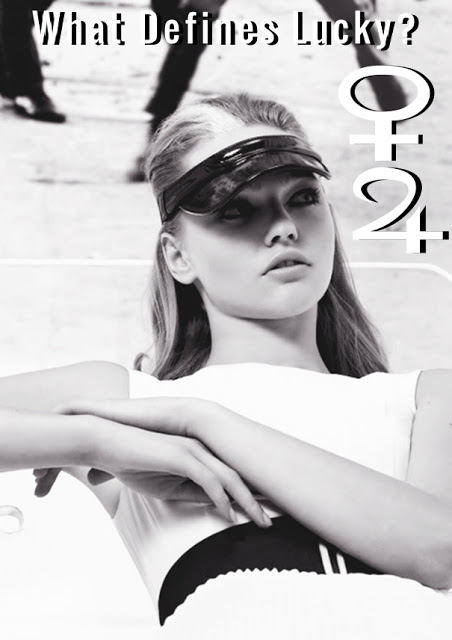
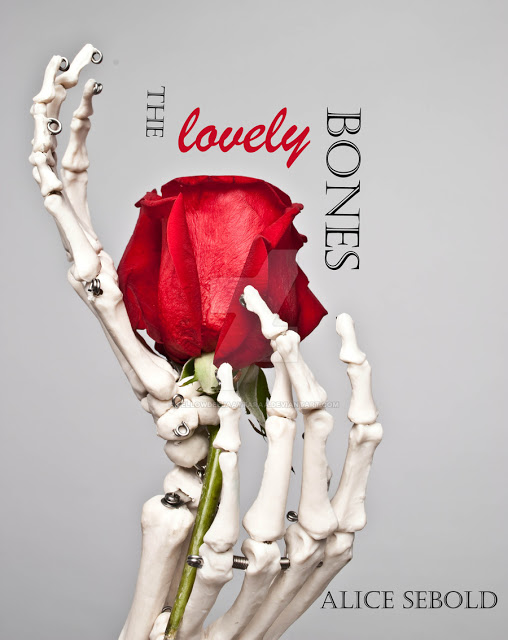

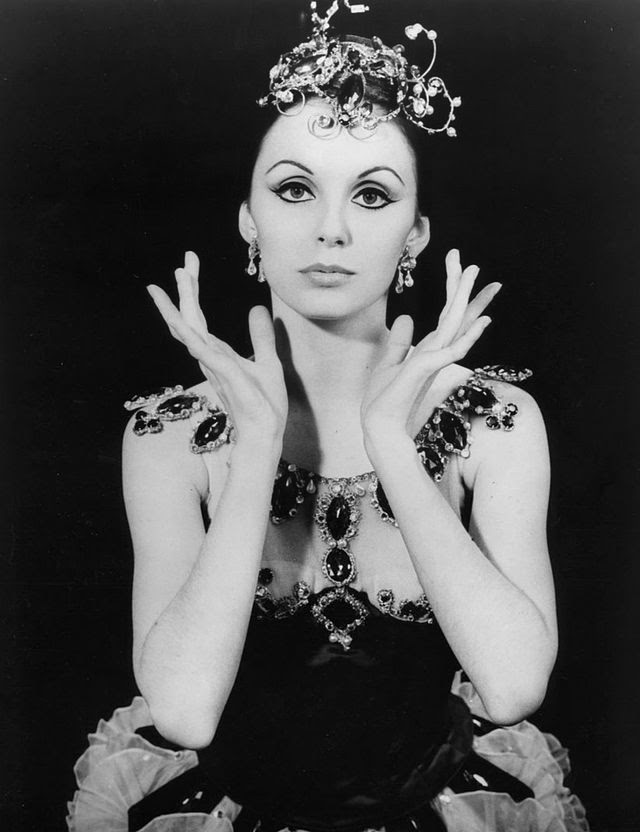

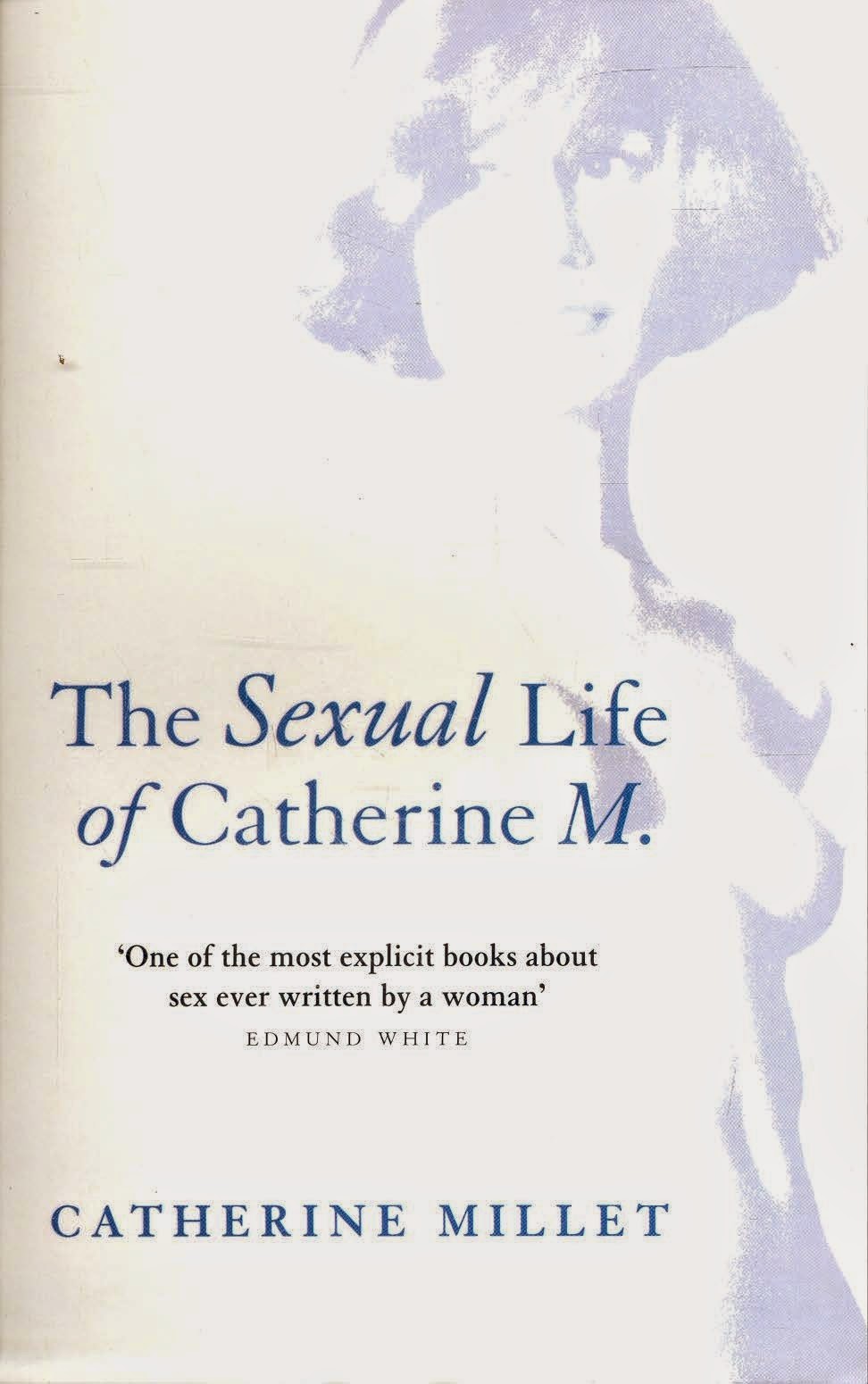
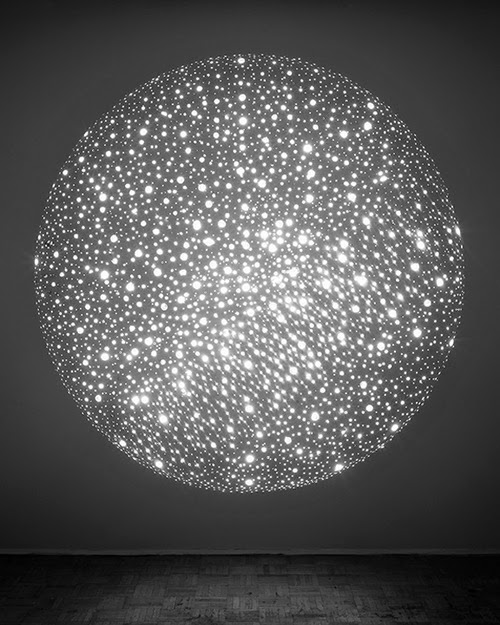

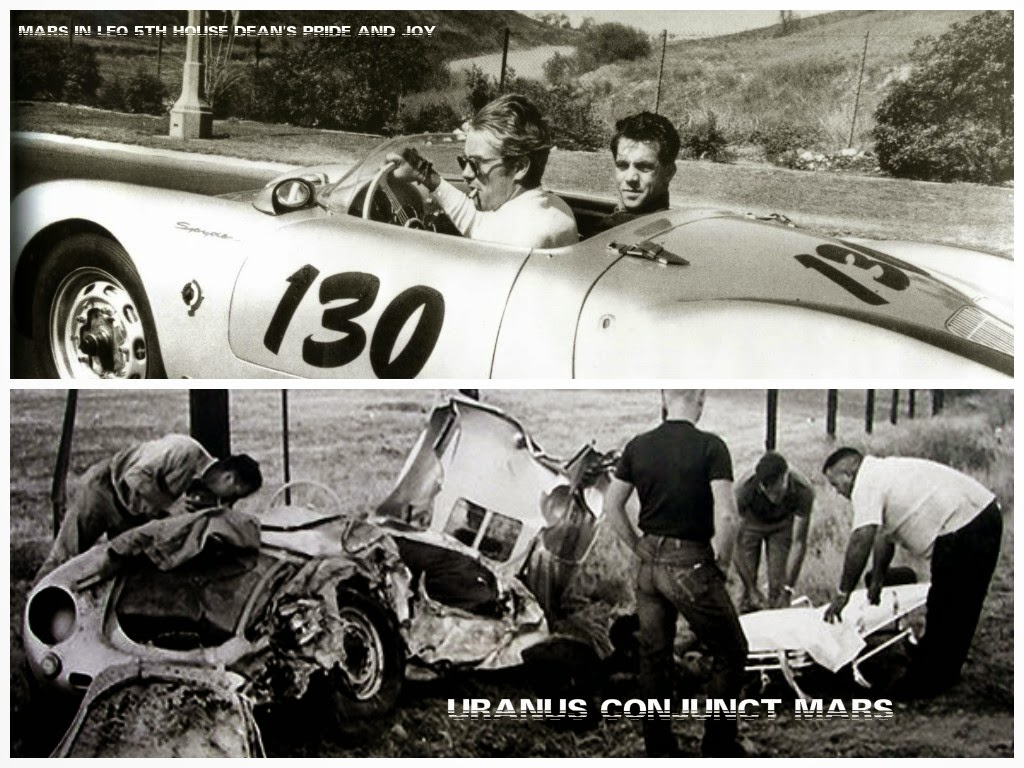
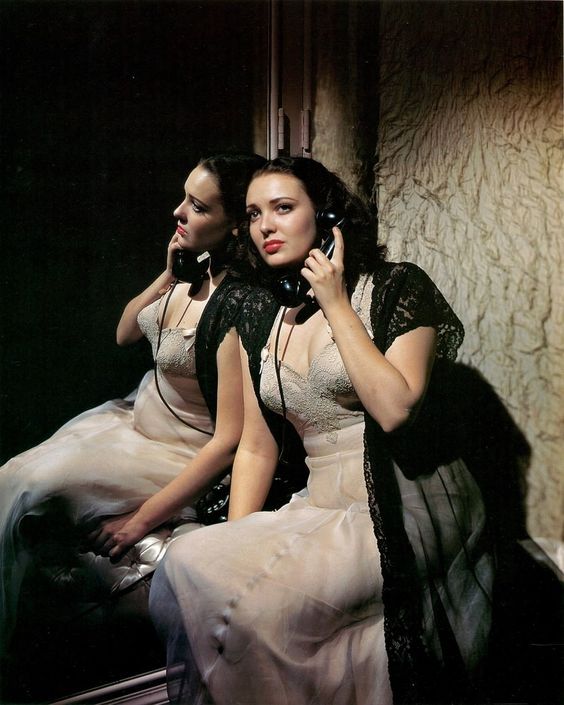




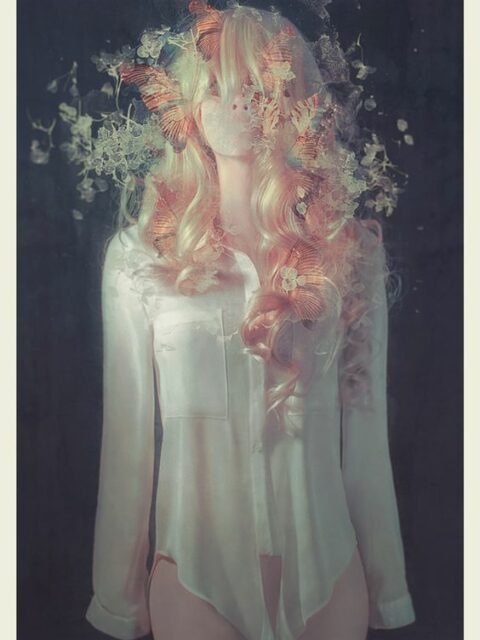
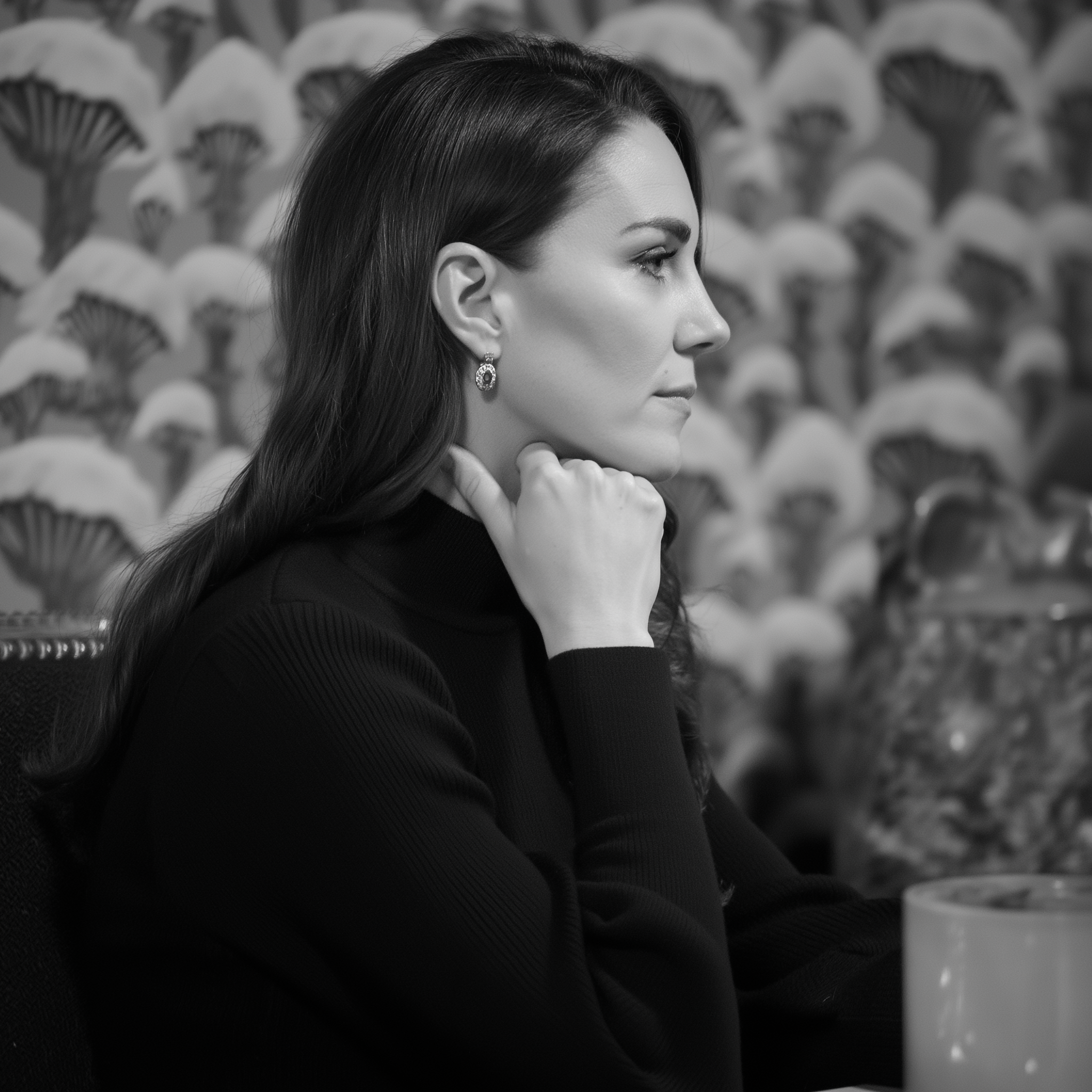

 Moon Conjunct Pluto Synastry
Moon Conjunct Pluto Synastry
 Reflections on a Past Venus-Pluto Synastry Aspect
Reflections on a Past Venus-Pluto Synastry Aspect
 Mars Conjunct Pluto Synastry
Mars Conjunct Pluto Synastry
 Mars-Pluto Synastry: Something Quite Dark and Dangerous
Mars-Pluto Synastry: Something Quite Dark and Dangerous
 Venus Trine Pluto: Dark Desires
Venus Trine Pluto: Dark Desires
 Sun Square Pluto Synastry: You’ve Got That Power Over Me
Sun Square Pluto Synastry: You’ve Got That Power Over Me
 Mars in Aquarius: Sex drive
Mars in Aquarius: Sex drive
 Sun Square Pluto Natal Aspect: I Am Titanium
Sun Square Pluto Natal Aspect: I Am Titanium
 Uranus Transits 8th the House: Rebirth from Chaos
Uranus Transits 8th the House: Rebirth from Chaos
 Venus Trine Mars Synastry
Venus Trine Mars Synastry
 Scorpio’s Cold Withdrawal
Scorpio’s Cold Withdrawal
 Mars Conjunct Pluto Natal Aspect: From Ember to Inferno
Mars Conjunct Pluto Natal Aspect: From Ember to Inferno
 Venus in the 5th House
Venus in the 5th House
 Moon in the 8th House: At Home in the Underworld
Moon in the 8th House: At Home in the Underworld
 The Twin Journeys of Saturn’s Returns
The Twin Journeys of Saturn’s Returns
 Venus Conjunct Pluto: The Enchantress of Obsession and Doom
Venus Conjunct Pluto: The Enchantress of Obsession and Doom
 Mercury Square Pluto Natal Aspect
Mercury Square Pluto Natal Aspect
 Pluto Transits Moon: A Time to Grieve
Pluto Transits Moon: A Time to Grieve
 Moon Conjunct Mars Natal Aspect
Moon Conjunct Mars Natal Aspect
 Uranus Transits: 1st House: Winds of Change:
Uranus Transits: 1st House: Winds of Change: